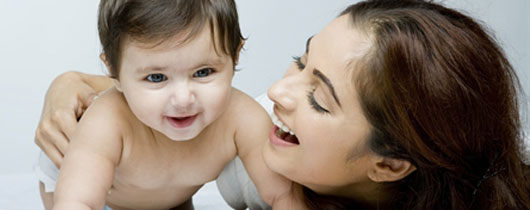The uterus, or womb, is a hollow organ situated within the pelvic cavity. It is rather like an inverted pear with the sharp end (cervix) pushing down into the upper end of the vagina. The uterus consists of two parts, the body and the cervix.

The body of the uterus, containing the uterus cavity, constitutes approximately two-thirds of the uterus, and the cervix comprises the other third. The upper part of the uterus is known as the fundus. The cavity of the uterus is triangular in shape with the Fallopian tubes entering at the upper and outer corners of the triangle.
The cervix, or neck of the uterus, protrudes into the vagina where it can be felt as a firm, hard, fibrous dome-shaped structure which varies in diameter from half to one and a half inches. Through its center, the cervical canal extends upwards for about an inch until it enters the cavity of the uterus.
The uterus is composed almost entirely of special muscle, together with a small quantity of fibrous tissue. There is no voluntary control over the muscle of the uterus. It is known as involuntary or smooth muscle, and is similar in this respect to the muscle of the intestine, of the blood vessels and to the highly specialized muscle of the heart. You can move your arms and legs by exerting control over the muscles in your limbs, but you have no conscious influence over the involuntary muscle of your heart, intestine, blood vessels, or of your uterus. The walls of the body of the uterus are approximately half an inch thick and the muscle fibers themselves are arranged in three different directions. Some encircle the uterus, some extend up over the top and down the other side, while others are oblique and spiral. Because the cervix contains more fibrous tissue than the uterine body, it is much firmer and harder than body of the uterus.
The cavity of the uterus is lined by a mucous membrane called the endometrium. This is a highly specialized layer of glandular tissue which is shed at menstruation and which is converted under the influence of hormones to form the decidua that is essential to the preservation and continuation of pregnancy.
It must be clearly understood that all the pelvic organs are freely movable. The uterus and cervix can be moved painlessly not only up and down but also sideways and from front to back. The uterus normally lies tilted forward in a position that is known as anteversion with its fundus, or upper part, against the bladder. When the bladder fills, the uterus is pushed upwards and backwards so that it comes to lie in direct line with the vagina.

If the uterus is tilted backwards it is known as retroversion, sometimes called twisted uterus, tilted uterus or upside-down uterus. A great deal of mystery surrounds the retroverted uterus. Approximately 20 percent, or one in five, of all women have a uterus that is tilted backwards. This is known as a congenital retroversion and is absolutely normal. It has been in this position from birth and it will remain in this position (unless operated upon or during pregnancy) for the duration of life. It does not cause any difficulties during menstruation or problems of infertility; nor does it predispose to miscarriage or lead to complications in labour.
The problem occurs if the uterus becomes retroverted as a result of disease or infection. This is known as acquired retroversion and may give rise to symptoms that are caused by predisposing disease or infection.
The uterus is supported firstly by the pelvic floor and secondly by the tri-radiate ligament attached to the upper part of the cervix. This ligament consists of three parts. One runs forwards to the back of the symphysis, the second runs laterally to the sidewall of the pelvis and the third goes backward to be attached to front part of the sacrum. All the outer ends of the tri-radiate ligament are attached to the bony pelvis and they form a type of hammock, suspending the uterus in the center of the pelvis above the pelvic floor and allowing it considerable freedom of movement.
The blood supply to the uterus comes from the main blood vessels in the pelvis. This blood supply is very good and ample, and has an ability to increase to many times its volume during pregnancy.
The nerve supply to the uterus is very complicated. The muscle contracts rhythmically, especially during labor and during menstruation. Sensations coming from the uterus are similar to those that emanate from the intestine; in other words, the uterus only responds to stretching and this alone will cause discomfort. It can be cut or the cervix burnt as in cauterization of an ulcer on the cervix without any pain or discomfort. Stretching, however, of either the cervix or the uterus may cause quite severe pain.

